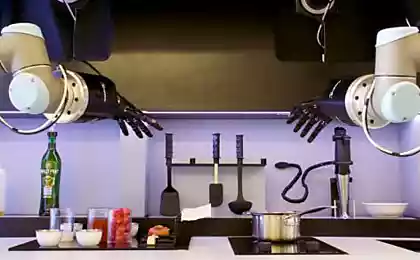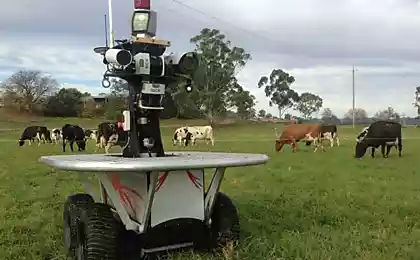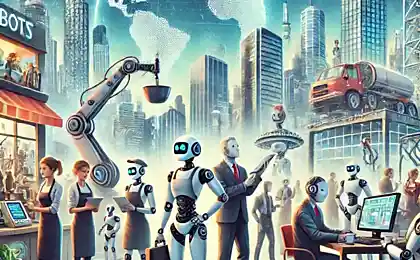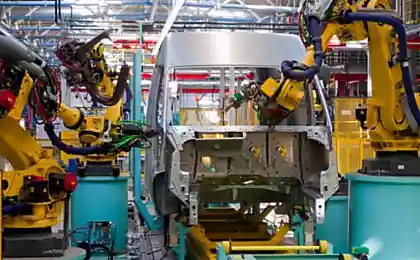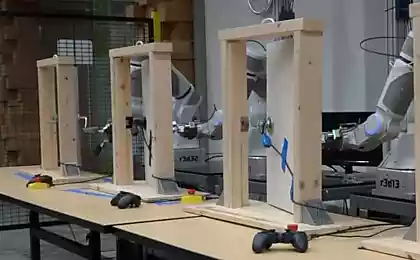562
In Australia, agricultural robots replace humans on the farm-workers
Robotics penetrates into all spheres of our life. In particular this applies to industry, agriculture, space exploration. With regard to agriculture, the robots are already able to check the status of the gardens and even harvest. Now robots have learned to graze cattle and to inform the farmer about the problems with individual animals.
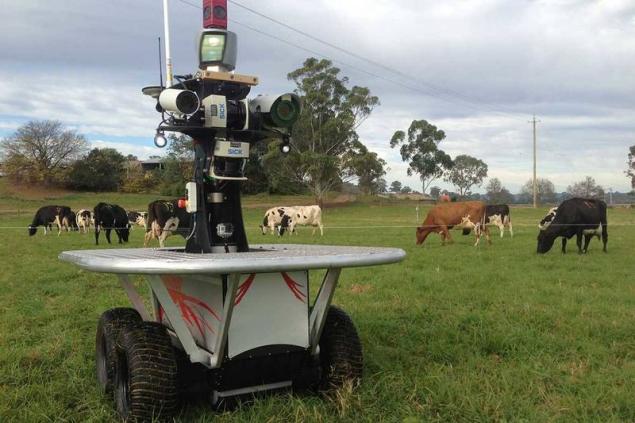
Such systems are very popular in Australia, where many farms are removed from any civilized center for many hundreds of kilometers. As a result, workers there is not enough, because in order to get to the farm, you need 13 hours or more. Not every employee will agree to get into a wilderness. Of course, if the worker is not made of metal and plastic.
For cattle on these farms there is no one to watch - and the animals are often killed for unclear reasons. Sometimes the reason - illness, sometimes - injury. But to do all this just a nobody. And then come to the aid of robots.
Scientists and Australian engineers set about creating systems that are able to graze livestock, to monitor the state of pastures (to check whether there is enough grass, and how it is high quality, green and delicious), to carry out other work. If the animal is injured and can not walk, the robot detects the incident with the help of sensors and transmits the data to the farmer.
As for the grass, the monitoring of its quality robots are equipped with sensors that determine the color of plants, leaf size and general condition of pastures. Interestingly, the robot cowboy name has not yet been invented. But this is the second version of the system. The first, which was called Shrimp, was designed to take care of the size of herds of 20-150 animals.
Now robots are probation for his new job. And their creators in the field "adjusted" software and hardware. Robots have to watch the cattle at any time and in any place, whether wetlands, plains and hills. Tests are now held in the state of New South Wales.
Scientists say they have started to develop robotic cowboys because of people-workers simply do not have, as mentioned above. "Farmers who have agreed to test our system experienced a constant shortage of labor, and so they began to look for support in technology," - says the author of the project Sukkarieh Salah (Salah Sukkarieh), representative of the University of Sydney.
Scientists have already created several models of agricultural robots. One such model, Ladybird, used to control weeds in the beds. As soon as the robot detects weed plants are sprayed with the herbicide, the lowest possible amount, allowing better quality to destroy weeds with less pesticide consumption. Spot struggle is a much more effective than general spraying fields with herbicides.

Weeds will not be able to escape from the Ladybird
vigilant sensors Another development at all unique - a specialized robot rolls on the apple garden and count all the apples to a single, giving the farmer an idea about the size of future crops. In addition, the farmer, knowing where apples least, understand that this particular part of the garden require maximum care (watering, spraying insecticide, etc. trees).
If the tests are successful robots, and the price is acceptable, the Australian farm may be the most technologically advanced farms in the world in the near future.

Such systems are very popular in Australia, where many farms are removed from any civilized center for many hundreds of kilometers. As a result, workers there is not enough, because in order to get to the farm, you need 13 hours or more. Not every employee will agree to get into a wilderness. Of course, if the worker is not made of metal and plastic.
For cattle on these farms there is no one to watch - and the animals are often killed for unclear reasons. Sometimes the reason - illness, sometimes - injury. But to do all this just a nobody. And then come to the aid of robots.
Scientists and Australian engineers set about creating systems that are able to graze livestock, to monitor the state of pastures (to check whether there is enough grass, and how it is high quality, green and delicious), to carry out other work. If the animal is injured and can not walk, the robot detects the incident with the help of sensors and transmits the data to the farmer.
As for the grass, the monitoring of its quality robots are equipped with sensors that determine the color of plants, leaf size and general condition of pastures. Interestingly, the robot cowboy name has not yet been invented. But this is the second version of the system. The first, which was called Shrimp, was designed to take care of the size of herds of 20-150 animals.
Now robots are probation for his new job. And their creators in the field "adjusted" software and hardware. Robots have to watch the cattle at any time and in any place, whether wetlands, plains and hills. Tests are now held in the state of New South Wales.
Scientists say they have started to develop robotic cowboys because of people-workers simply do not have, as mentioned above. "Farmers who have agreed to test our system experienced a constant shortage of labor, and so they began to look for support in technology," - says the author of the project Sukkarieh Salah (Salah Sukkarieh), representative of the University of Sydney.
Scientists have already created several models of agricultural robots. One such model, Ladybird, used to control weeds in the beds. As soon as the robot detects weed plants are sprayed with the herbicide, the lowest possible amount, allowing better quality to destroy weeds with less pesticide consumption. Spot struggle is a much more effective than general spraying fields with herbicides.

Weeds will not be able to escape from the Ladybird
vigilant sensors Another development at all unique - a specialized robot rolls on the apple garden and count all the apples to a single, giving the farmer an idea about the size of future crops. In addition, the farmer, knowing where apples least, understand that this particular part of the garden require maximum care (watering, spraying insecticide, etc. trees).
If the tests are successful robots, and the price is acceptable, the Australian farm may be the most technologically advanced farms in the world in the near future.




